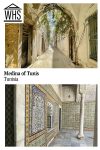Medina of Tunis
By Juan
What is the Medina of Tunis?
A “medina” normally refers to the old walled town of a Middle Eastern or Northern African country. The Medina of Tunis is the old quarter in the capital of Tunisia. It has been a UNESCO World Heritage site since 1979 and includes hundreds of monuments, palaces, madrasas, mosques, mausoleums and other architectural remains from the 12th to the 16th centuries.
Tunis was founded in 698 AD and developed through the Middle Ages.
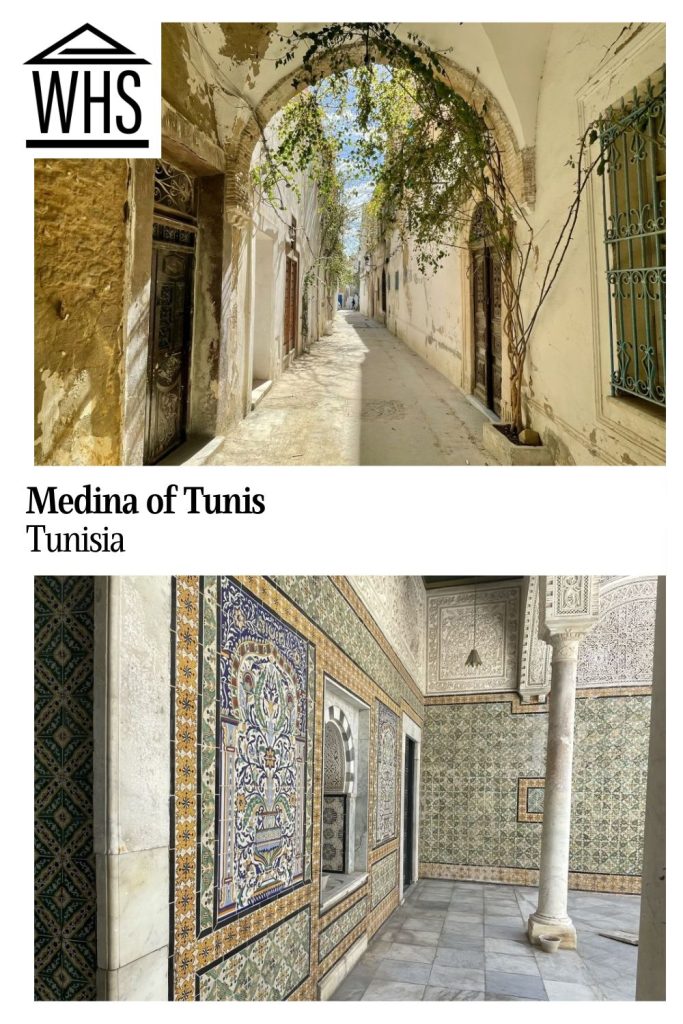
Disclosure: This article contains affiliate links. Making a purchase through an affiliate link will mean a small commission for this website. This will not affect your price. Privacy policy.
The UNESCO site covers 280 hectares (about one square mile) of the old city, including the central Medina, dating to the 8th century, and two early suburbs to the north and south of the center, which date to the 13th century. Of the 700 monuments within this World Heritage site, UNESCO mentions certain monuments as being “most remarkable.” They are:
- Mosques: Zitouna Mosque, Kasbah Mosque, and Youssef Dey Mosque
- Gates: Bab Jedid Gate and Bab Bhar Gate
- Markets: Souq el-Attarine and Souq ech-Chaouachia
- Palace: Dar el-Bey
- Mausoleums: Tourbet el Bey and Zaouia of Sidi Mehrez
- Noble houses: Dar Hussein, Dar Ben Abdallah, Dar Lasram, the Medrasa Es- Slimanya and El-Mouradia
- Military barracks: El Attarine
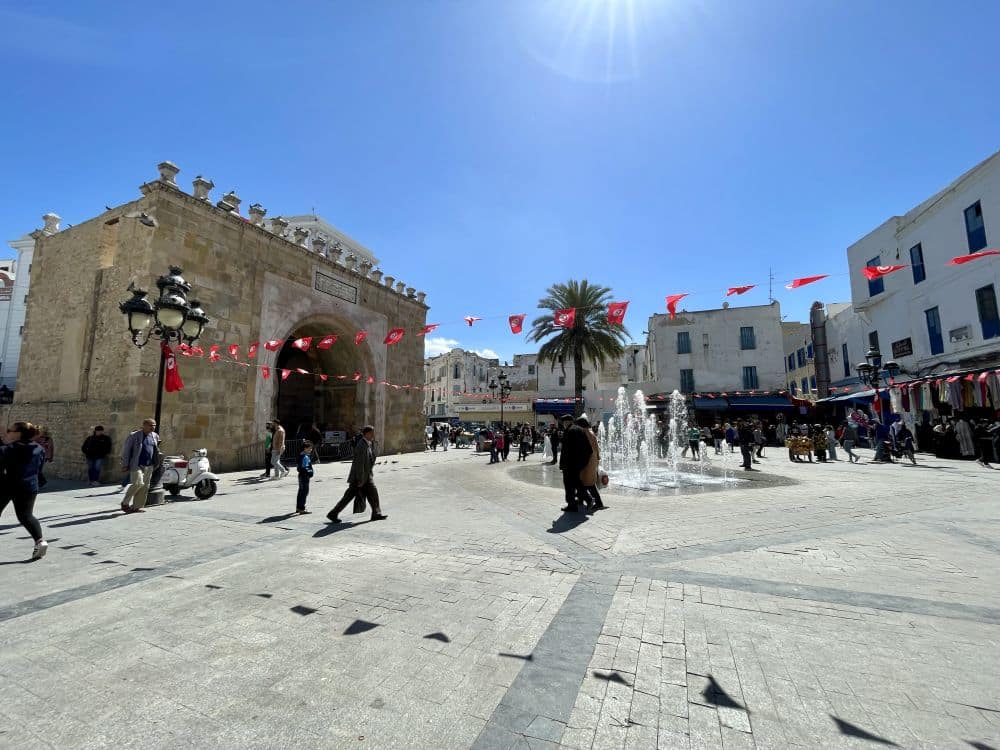
Why is the Medina of Tunis a UNESCO World Heritage site?
Some 500 years ago, Tunis was one of the greatest and wealthiest cities in the Islamic world. According to UNESCO, “the relay role played by the Medina of Tunis between the Maghreb, Southern Europe and the East encouraged exchanges of influences in the field of the arts and architecture over many centuries.”
With its souqs (street markets), its urban fabric, its residential quarters, monuments and gates, this ensemble constitutes a prototype among the best conserved in the Islamic world. The Medina of Tunis is “an example of a human settlement that has conserved the integrity of its urban fabric with all its typo-morphological components.”
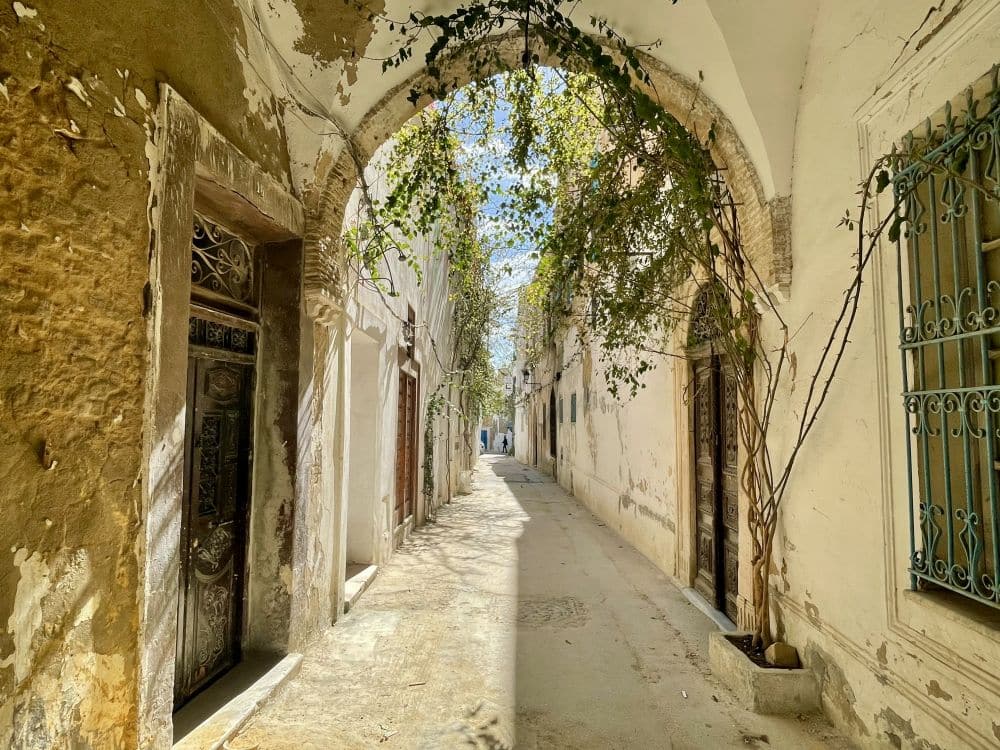
What can you expect on a visit to Tunis Medina?
As a typical North-African medina, you will immediately find yourself immersed in a labyrinthine town where you feel almost transported in time. The bustling of the local businesses and inhabitants is complemented with the medieval architecture and narrow streets.
One of the first things you will notice when wandering around the Medina of Tunis are the colourful doors in most of the houses. The rich decorations and colours can have different meanings and could also give a glimpse of the religion of the family that lives in the property.
You can also admire the mosques and palaces and with many hotels and guesthouses being located in centuries-old properties, you will get a glimpse of how the huge houses can be a labyrinth by themselves.
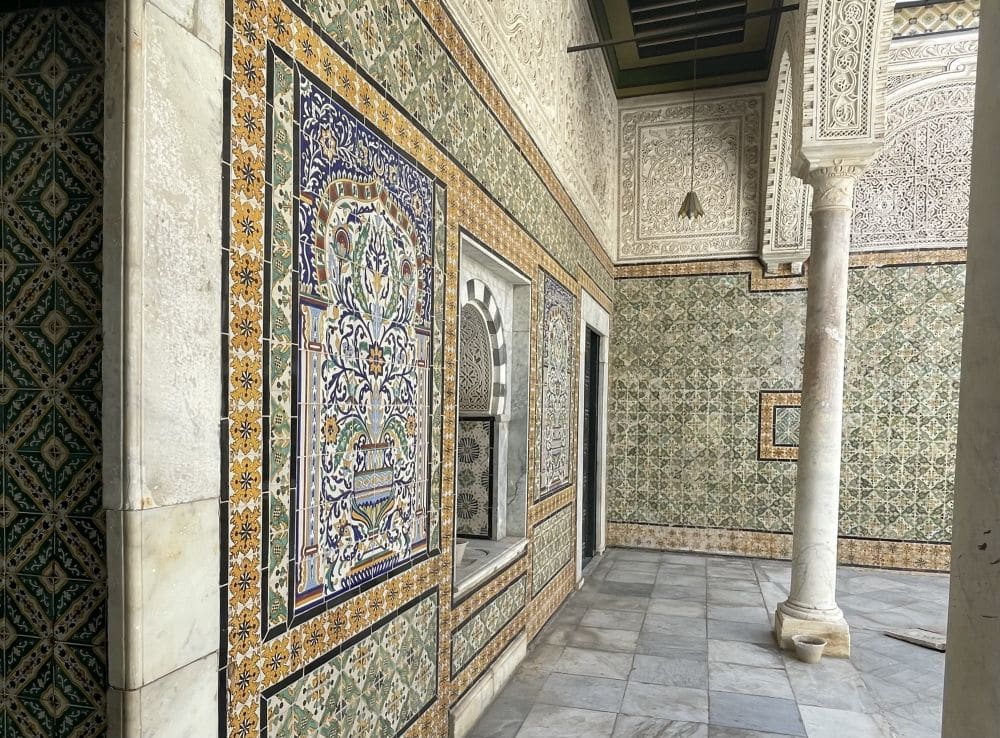
The historical socio-economic development of Tunis has made the traditional settlement of the Medina vulnerable. Although it’s protected, you will also find areas that seem to be crumbling.
Just outside of the city you will also find the ancient Roman ruins of Carthage – also a UNESCO site – and the beautiful blue-and-white town of Sidi Bou Said.
Is the Medina of Tunis worth visiting?
Definitely! Most likely the capital city will be the first stop in your Tunisia itinerary anyways, so I recommend you to stay one or two days wandering around the capital, which has a charming mix of Arabic and French influences.
You will also find lots of traditional restaurants and artistic performances. Overall, it feels mostly a very authentic medina but you will find many sites for tourists as well. The upside of this is that you can find options for enjoying Tunis that suit almost any budget.
Find accommodations in Tunis here, or use the map below – zoom out for more options:
What sorts of travelers would like the Medina?
This is definitely one of those destinations for people who like history and there’s no shortage of it in Tunis. But you will also enjoy visiting the Medina if you like to be immersed in Arabic culture, with its bustling souqs lending perspective on a daily life that may be quite different in your home country.
Be prepared to walk. Even if you take part in organised tours, the Medina is mostly a pedestrian area, so I consider this to be an active holiday destination.

Tips for visiting the Medina
The most important aspect when visiting Arabic countries is to be respectful of their places of worship. Normally you will find signs outside the temples mentioning if it’s possible for foreigners to enter and, if so, what the dress code is.
Whilst in Tunis, you can also organise day trips to Carthage and Sidi Bou Said, which are only a short train ride away. You could dedicate half a day for each of them. I highly recommend adding these two locations to your travels. They’re well worth a visit.
Take some comfy walking shoes with you. The Medina is quite big and it’s mostly a pedestrian area.
Many restaurants don’t advertise prices on their menus so make sure to ask before ordering. It’s not uncommon to be scammed in this part of the world.
I felt very safe when wandering around the Medina, even in some dark covered streets, but no matter where you travel in the world, always use your common sense. This is important to know when walking in an area where it’s easy to get lost.
If you don’t get a local sim card, make sure to download offline maps on your phone before arriving in Tunisia so you can safely find your accommodation. Depending on where it’s located, you may have to walk there. Many streets are closed to vehicles.
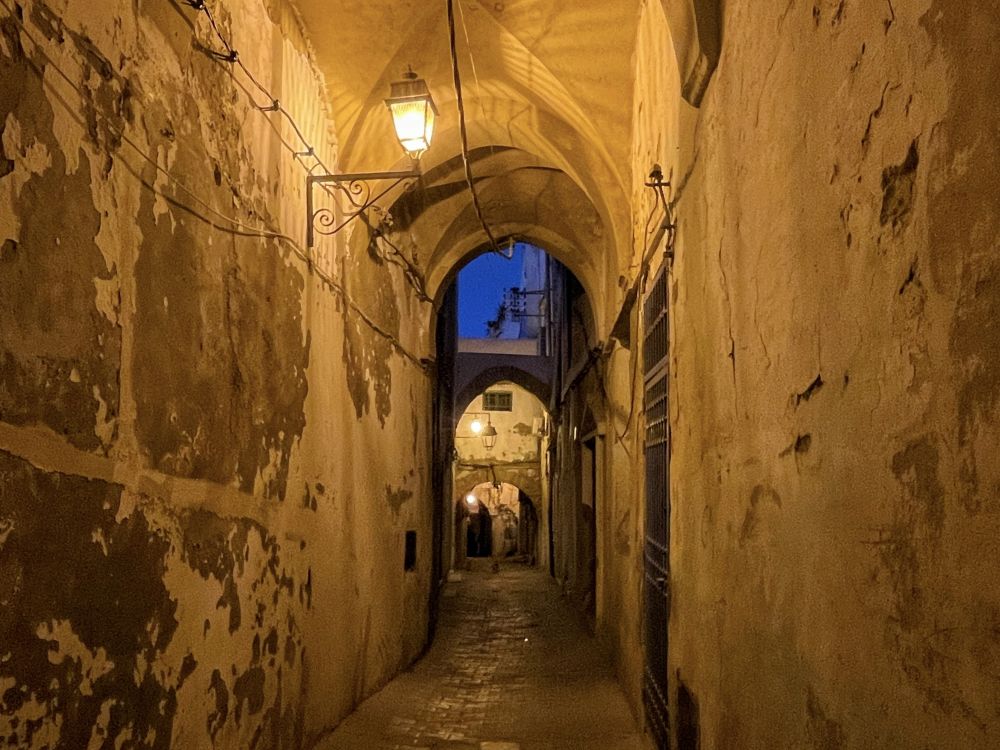
Where is the Medina of Tunis?
The capital city, Tunis, is in the northeast of Tunisia. The Medina of Tunis is 10-15 minutes away from the airport by taxi or public bus. Once again, beware of scams as taxis inside the airport are pretty expensive. Whilst a public bus costs about €0.15, I met travellers who paid €40 for a taxi ride.
To travel to other cities in Tunisia you can take the train, bus or a “louage,” which are shared taxis with official rates so you won’t be scammed. In my Tunisia itinerary, you’ll find tips and things to know to grab a louage in Tunisia, so make sure to check it out.
There are no entry fees to visit the Medina of Tunis, but you may have to pay admission for certain temples or palaces.

Have you been to Tunis? If so, do you have any additional information or advice about this UNESCO World Heritage site? Please add your comments below!

